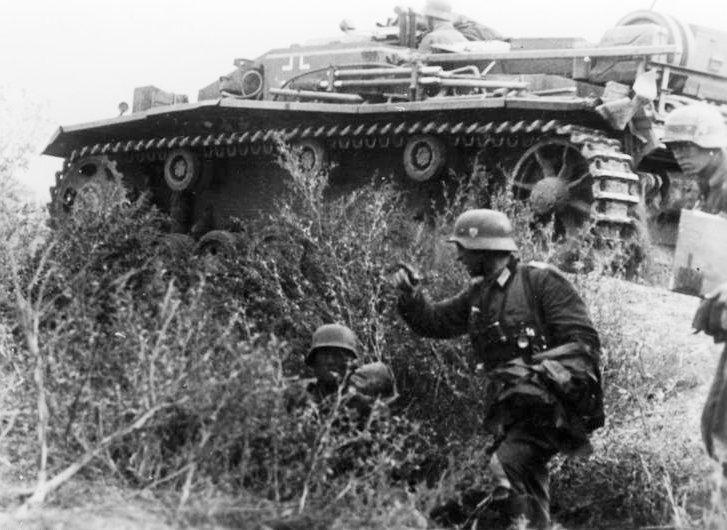German infantry and a StuG III assault gun in Stalingrad
Although the battle for Stalingrad has received an enormous amount of attention in the literature on World War II, what is often forgotten about the German war machine that assaulted Stalingrad was that it initially appeared to be anything but standing on the edge of a disaster; it appeared invincible. Late in the summer of 1942 the German Sixth Army held enormous advantages over the Soviet 62nd Army, the primary Soviet army defending Stalingrad, and did so for a number of reasons.
First, by September 1942, psychologically the Red Army was perhaps at its lowest point in the war. Almost every offensive the Red Army had launched during the spring and summer of 1942 - across the entire front, from Leningrad down to Kharkov - had ended in failure. Moreover, in Southern Russia the scope of the Red Army's defeats had been so dramatic as to completely undo the feeling of optimism that had followed the successful late 1941 defense of Moscow and subsequent January 1942 counteroffensive. Soldiers of the Red Army fighting against the Germans in the summer of 1942, such as Anatoly Kozlov, a liason officer in the 1st Tank Army, spoke for many of his former comrades when he described their despair as near complete in the face of what seemed to be overwhelming German strength. The Germans dominated the skies, possessed far greater mobility and often could count on better equipment; particularly in communications.
Moreover, The German Sixth Army was an elite combined arms fighting force honed and tested by over two years of combat and possessing substantial hitting power in its 22 divisions, which included; three panzer divisions, the 16th, 22nd, and 24th Panzer Divisions, and two motorized divisions, the 3rd and 60th Motorized Divisions. Furthermore, the Sixth Army could count on relatively lavish logistical support. During September 1942 alone the German Sixth Army expended some 23 millions rounds of rifle and machine gun ammunition, 750,000 mortar rounds, 685,000 tank and artillery shells and 178,000 hand grenades in a tremendous display of firepower far beyond anything available to its primary foe; the Soviet 62nd Army. That said the German Sixth Army did have a weakness - its leader.
General Paulus was many things; he was intelligent, a superb planner, professional and a master of organization who had a clear simple goal; break up the 62nd Army, drive its remnants against the Volga River and annihilate it. However, he was also slow to make decisions and isolated himself from the battle in Stalingrad, with his command post some sixty miles removed from the front, often leaving him out of touch from what was going on at the front. Consequently, at critical points in the battle, when a more engaged, aggressive and decisive commander may have thrown everything at opportunities as they opened up Paulus would vacillate, with his indecision possibly proving critical to the outcome of the struggle; particularly in the crucial battles of September and October.
Picture Courtesy of Deutsches Bundesarchiv (German Federal Archive), Bild 183-B28822


